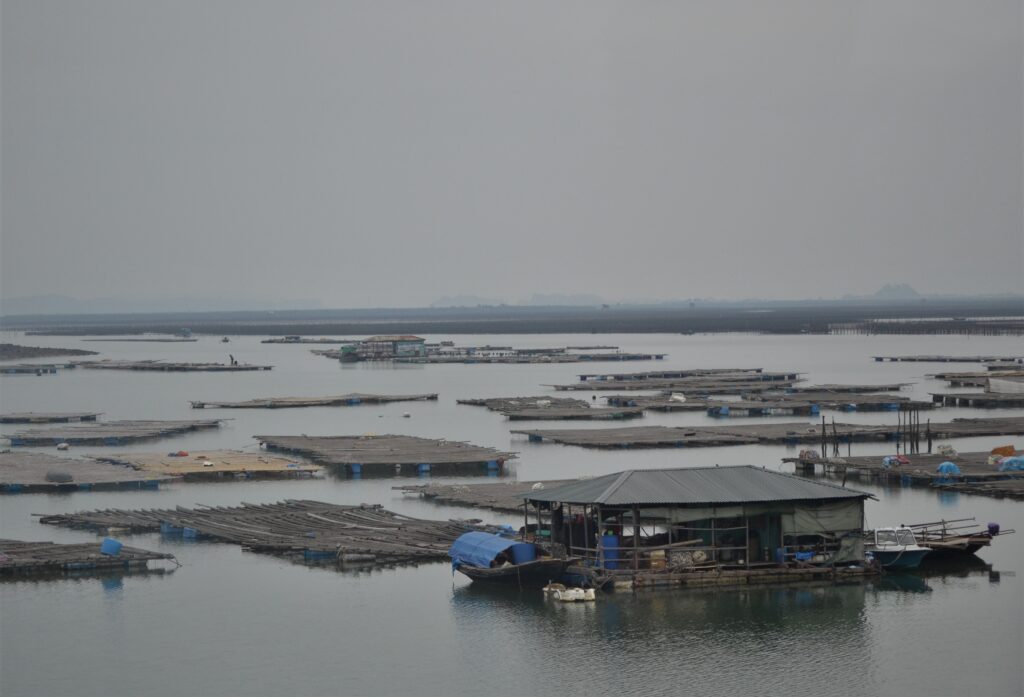By Jacqueline R. Parairo
The Department of Science and Technology – Philippine Council for Agriculture, Aquatic and Natural Resources Research and Development (DOST-PCAARRD) and the Central Visayas Agriculture, Aquatic and Natural Resources Research and Development Consortium (CVAARRDEC) are exploring various prospects and livelihood opportunities for a sustainable blue economy in the Philippines.
As part of the 2023 National Science, Technology, and Innovation Week (NSTW) in Iloilo City, experts and researchers shared various studies on Thursday that could unleash the potential of the blue economy in different areas of the country, especially in the countryside.
The blue economy is an economic development model that focuses on the sustainable management and use of natural and other resources in the maritime sector. It aims to sustainably use ocean resources for economic growth and improved livelihoods while preserving the health of the ocean ecosystem. Given that the Philippines is archipelagic in nature, it possesses the right resources that can provide opportunities for growing the country’s blue economy.
Dr. Jesrelljane A. Amper of Bohol Island State University gave a lecture entitled “Navigating the Storm: Understanding the Impact of COVID-19 on Small-Scale Fisherfolk in Danajon Bank and Building Resilience for a Sustainable Blue Economy.” She emphasized the importance of small-scale fisherfolk and their vulnerability, as well as the strategies they employed to overcome challenges, particularly during the pandemic.
“Small-scale fisherfolk, often overlooked despite their significant population, emerged as one of the most vulnerable sectors to the far-reaching impacts of the pandemic. Their vulnerability is rooted in economic factors since most of them rely on their daily catch sales and local market,” she said. “In Danajon Bank, fishing is the core of daily life for everyone, for both men and women. The majority depend on catching fish from the sea as their main source of income. During the pandemic, the no-sail policy disrupted the supply chain and market access, leading to severe consequences for the income and financial stability of small-scale fisheries households in Danajon Bank.”
“Not only are fishing-related activities impacted, but the overall economic landscape has also been destabilized.”
She went on to list the coping strategies and innovations developed by the fisherfolk in Danajon Bank in the midst of the pandemic, namely: adoption of kinship-based marketing channels, shift to post-harvest processing of fish (specifically drying and salting) to extend shelf life, diversification of livelihood sources such as gardening, and substitution of traditional food and nutritional sources using seaweed-based delicacies such as “puto,” biscuits, and jams.
Considering the impact of the COVID-19 pandemic on small-scale fisherfolk, Dr. Amper and her team suggested using the sustainable livelihood approach and put forth some policy recommendations, such as streamlining and simplifying access to support programs, providing training in sustainable fishing practices, facilitating partnerships between small-scale fisherfolk and larger seafood distributors, and providing fisherfolk health coverage and financial support in emergencies.
Meanwhile, Dr. Danilo B. Largo of the University of San Carlos gave a presentation on his study entitled “The Culture of Sargassum in the Philippines: Present and Future Prospects for Blue Economy.” His lecture focused on this particular type of brown seaweed, its benefits to marine organisms, and all its potential uses to improve the country’s blue economy.
“Many of you may not be familiar with Sargassum, perhaps because this marine organism is not easily seen, although it is very ubiquitous sometimes during the year, forming blooms that float around at the end of the year,” he explained.
“So, why are we interested in Sargassum? What caught our attention? Sargassum… [it] is so abundant in other parts of the world, but on this side of the Pacific, we are trying to culture them. They form an underwater forest. They allow organisms to thrive – serving as habitat, shelter, feeding ground, nursery, spawning, and breeding grounds for a lot of marine organisms. No other seaweed in the tropics can compare to the size and biomass of Sargassum,” he continued. “Other countries have already utilized it for a wide range of applications.”
Dr. Largo listed some potential products that the Philippines can extract from Sargassum, including Sargassum alginate, which can be used in the food industry as an emulsifier, thickener, or stabilizing agent, or in the biomedical industry as a microencapsulating or radiography agent. It is also being used to create bioplastics, which can be used in food packaging to reduce the use of synthetic plastics.
Sargassum is also seen to have anti-cancer and prebiotic properties, as well as antioxidative and antimicrobial properties.
Another important potential use is the seaweed-based animal feed, which will reduce methane gas emissions in cattle and therefore substantially mitigate the volume of greenhouse gases. Studies have also shown that aquatic animals fed with Sargassum-based feed had improved immune systems.
However, despite its potential, it is still not being used to improve the economy.
“There is still a standing policy of prohibiting harvesting, whether it comes from the natural population or from the cultured sargassum,” lamented Dr. Largo. “The solution here is really to introduce the culture of Sargassum for a sustainable supply of seaweed and to spur the Philippine blue economy.”
Dr. Largo and his team attempted to develop hatcheries for different species of Sargassum, of which there are forty to sixty to choose from in the country. They developed and produced two culture manuals and one primer for the responsible farming of sargassum and a proposed management strategy.
This forum was part of the DOST-PCAARD’s Techno Fora covering various topics in the conservation and management of natural resources. (PR)




